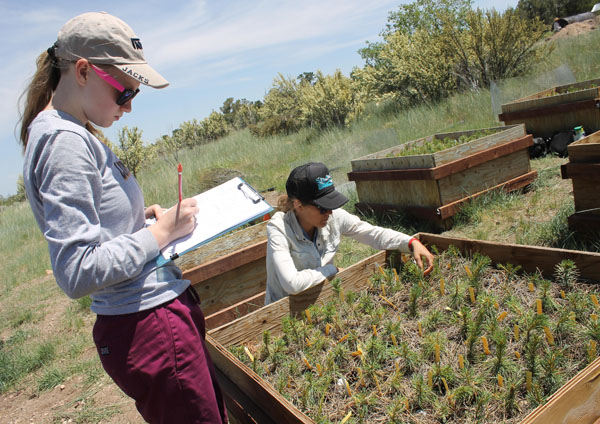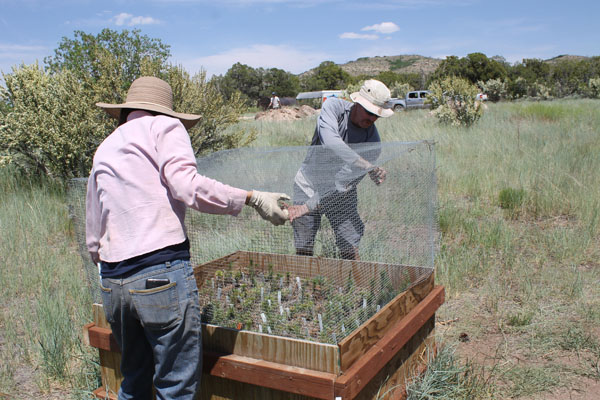
By David A. Schaller
Until recently, seasonal climate variations have been a big plus for Coconino County. When the heat kicks in across southern Arizona each summer, those in the know retreat to the gentler climes of places like Oak Creek, Sedona, Flagstaff and Williams. These patterns of seasonal movement are in a way a dress rehearsal for what will be needed more often in a warmer, drier Southwest.
People know intuitively that when natural climate changes become disruptive, we can pick up and move if we must. From sea level rise alone, climate-driven migration is already underway in southern Louisiana, along the Alaska coast, and in the far-flung coral archipelagos of the Pacific Ocean. It might not be easy – or inexpensive or preferred – but the idea of escaping harm when it shows itself is part of our resiliency as humans. But nature, in all its complexity, does not always have the option of moving.
 Among Coconino County’s most treasured assets is the 1.6-million acre Kaibab National Forest. Flanking both north and south rims of the Grand Canyon, its immense stands of pine, fir, spruce, aspen and oak harbor an array of the state’s most important ecological, recreational, economic, and cultural treasures. Beyond the individual beauty of an ancient ponderosa pine, the forest serves to hold soil in place and protect watersheds, while providing cover and food for a web of life that ranges from microorganisms to the majestic elk.
Among Coconino County’s most treasured assets is the 1.6-million acre Kaibab National Forest. Flanking both north and south rims of the Grand Canyon, its immense stands of pine, fir, spruce, aspen and oak harbor an array of the state’s most important ecological, recreational, economic, and cultural treasures. Beyond the individual beauty of an ancient ponderosa pine, the forest serves to hold soil in place and protect watersheds, while providing cover and food for a web of life that ranges from microorganisms to the majestic elk.
The climate future for the county’s forests is growing uncertain, however. In response to less moisture, rising temperatures and heat-compromised soils, many trees are expected to wither and perish as they cannot pick up and move like Birnam Wood in a Shakespeare play.
To give these forests a shot at surviving, scientists from Northern Arizona University are now partnering with other state universities, government agencies and nonprofits on the Southwest Environmental Garden Array project (SEGA). They are taking an ambitious look at what climate changes portend for the state’s plants and trees, including the forests of Coconino County. The project is designed to look at the effects of climate change on individual plant species, communities, and their supporting ecosystems. At 10 field research sites across the region, scientists are quantifying responses to changing climatic conditions on a scale ranging from genes to ecosystems.
At sites in the north Kaibab Forest, different species of trees are being grown under conditions of varying temperature and moisture and at varying elevations. Over several growing seasons, scientists want to learn which species are most likely to survive as heat and precipitation conditions change. As part of the SEGA research work this past summer, volunteer “citizen scientists” from the nonprofit Grand Canyon Trust aided university researchers in measuring the health, growth and mortality of thousands of pine seedlings at monitoring stations south of Jacob Lake.
 A second large- scale climate adaptation effort in Coconino County is reflected in the Grand Canyon Trust’s recently published climate change management plan for the region. The Trust’s plan looks at risks from drought and increased wildfires over 800,000 acres on the North Rim of the Grand Canyon, where the Trust holds cattle grazing permits and where there have been frequent fires in recent years. The first-ever plan is expected to assist the U.S. Forest Service in meeting its own climate change goals, according to the Forest Service’s climate coordinator.
A second large- scale climate adaptation effort in Coconino County is reflected in the Grand Canyon Trust’s recently published climate change management plan for the region. The Trust’s plan looks at risks from drought and increased wildfires over 800,000 acres on the North Rim of the Grand Canyon, where the Trust holds cattle grazing permits and where there have been frequent fires in recent years. The first-ever plan is expected to assist the U.S. Forest Service in meeting its own climate change goals, according to the Forest Service’s climate coordinator.
When it comes time for tough management actions in response to climate threats to the forest, the common ground being sought by the Trust and the Forest Service will be a model for others. An inventory of springs and other water sources on the North Rim, crucial for both wildlife and domestic livestock, will be one of the first initiatives under the plan.
It would be easy to let the scale and challenges of climate disruption become paralyzing, particularly across an area as vast as the Colorado Plateau. Instead, smart, pre-emptive efforts like those reflected in the SEGA project and the Grand Canyon Trust’s regional climate plan are helping make Coconino County a showcase for climate adaptation in the state of Arizona.
For Green Living’s climate change series, each month we will focus on one of Arizona’s 15 counties and how climate change is affecting it specifically. Next month’s installment will focus on Gila County.
David Schaller is a retired environmental scientist living in Tucson where he writes on climate, water and energy security.
Top photo, courtesy of Montana Johnson, Grand Canyon Trust.
Read more environment articles at greenlivingaz.com/environment





